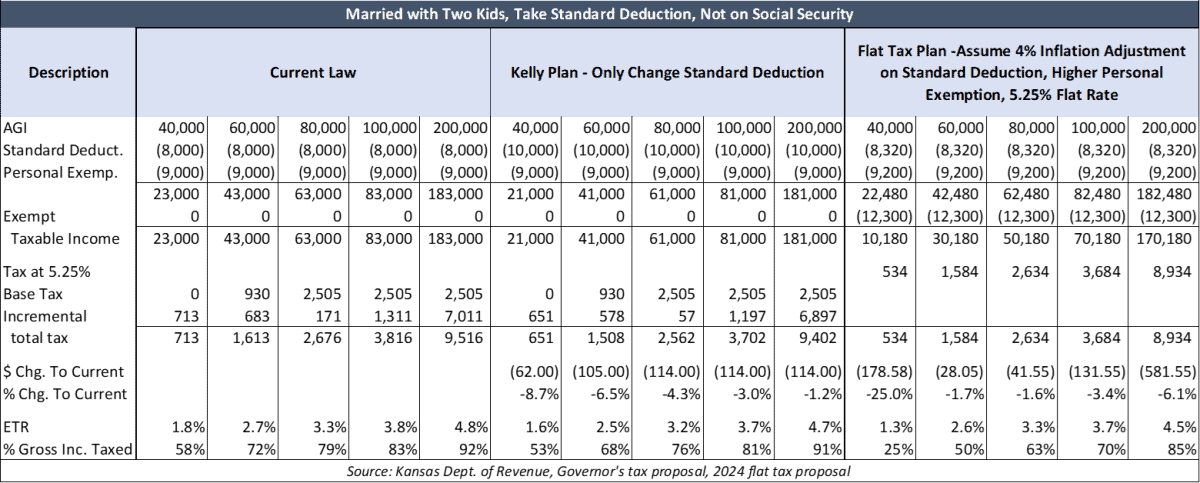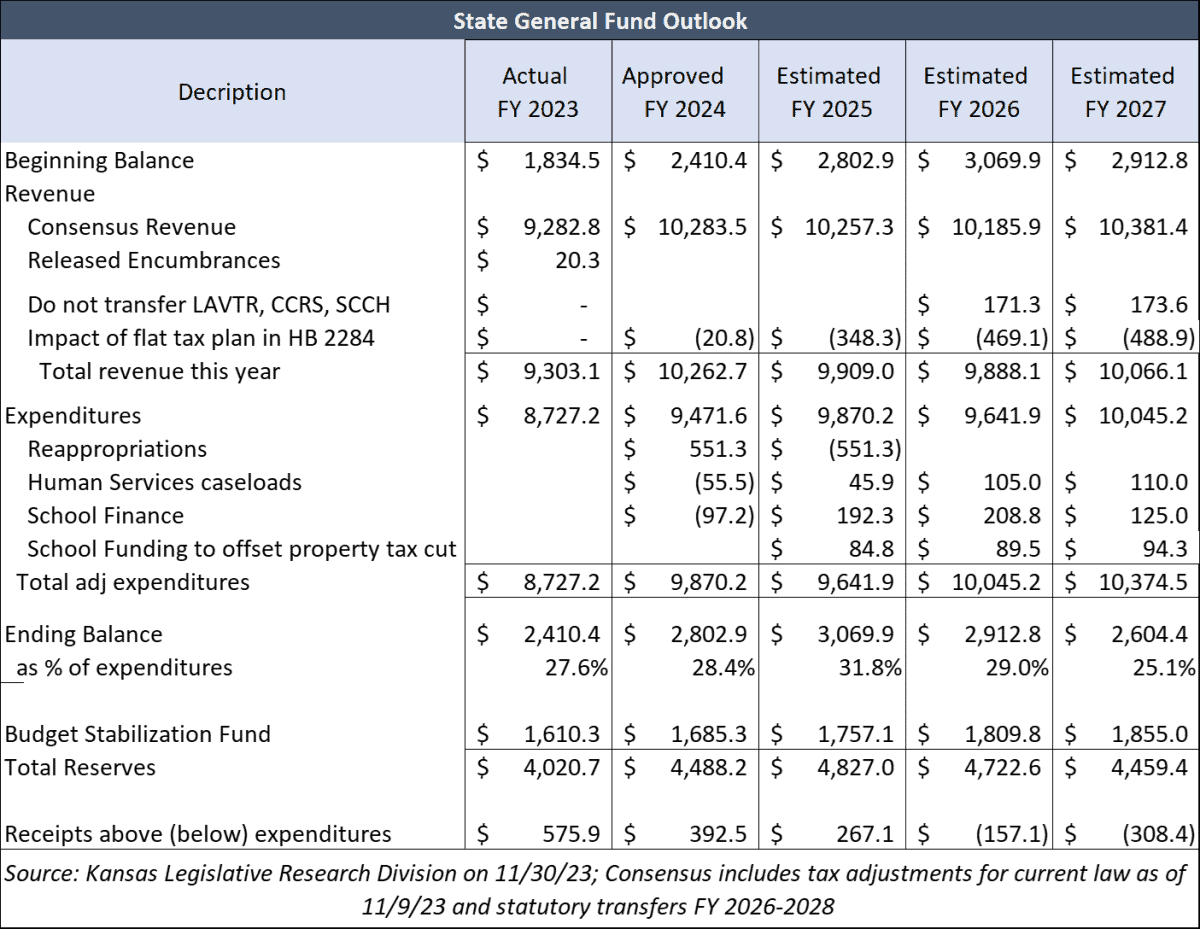Low-income families fare much better under the flat tax proposed this week by the Kansas House and Senate leadership team than under Governor Kelly’s plan, according to an analysis by the Sentinel’s owner, Kansas Policy Institute.
The table below models a married couple with two kids taking the standard deduction and not on Social Security at several income levels Under current law, a couple with an adjusted gross income (AGI) of $40,000 has a taxable income of $23,000 and pays $713 in income taxes. Kelly’s proposal with the standard deduction would save this couple $62. That family saves $179 with the flat tax proposal, however.
The biggest difference comes from exempting the first $12,300 from taxation. That change also means a family of four with AGI of $29,820 would pay no tax, but they would pay $335 under Kelly’s plan.

Governor Laura Kelly’s plan increases the standard deduction but keeps the tiered rate system that tops out at 5.7%. The House and Senate Leadership plan doesn’t immediately increase the standard deduction but raises it for inflation, provides a larger personal deduction, exempts the first $6,150 single / $12,300 married from taxation, and a flat rate of 5.25% on taxable income. The above table assumes a 4% inflation increase for the standard deduction.
Both proposals reduce residential property taxes and eliminate the state sales tax on food and the state income tax on Social Security.
Governor Kelly’s claim that the flat tax will result in large budget deficits is not true.
Analysis by Kanas Legislative Research with adjustments for the flat tax now in House Bill 2284 shows the state would still have a $4.5 billion surplus after three full years of flat tax.

Kansas is more competitive with a 5.25% flat tax
According to the Tax Foundation, fourteen states have individual income tax rate reductions taking effect in 2024: Arkansas, Connecticut, Georgia, Indiana, Iowa, Kentucky, Mississippi, Missouri, Montana, Nebraska, New Hampshire (interest and dividends income only), North Carolina, Ohio, and South Carolina. Two states—Ohio and Montana—will consolidate some tax brackets, and one state, Georgia, will move to a flat tax.
States with lower income taxes have superior economic growth, and that is desperately needed in Kansas. Private-sector job growth in Kansas was ranked #44 between 1998 and 2022. Last year, jobs grew by just 0.6% through November, which is only one-third of the national average.
Editor’s note: the original version of this article used the wrong standard deduction under the flat tax plan and, therefore, showed slightly higher tax savings.



